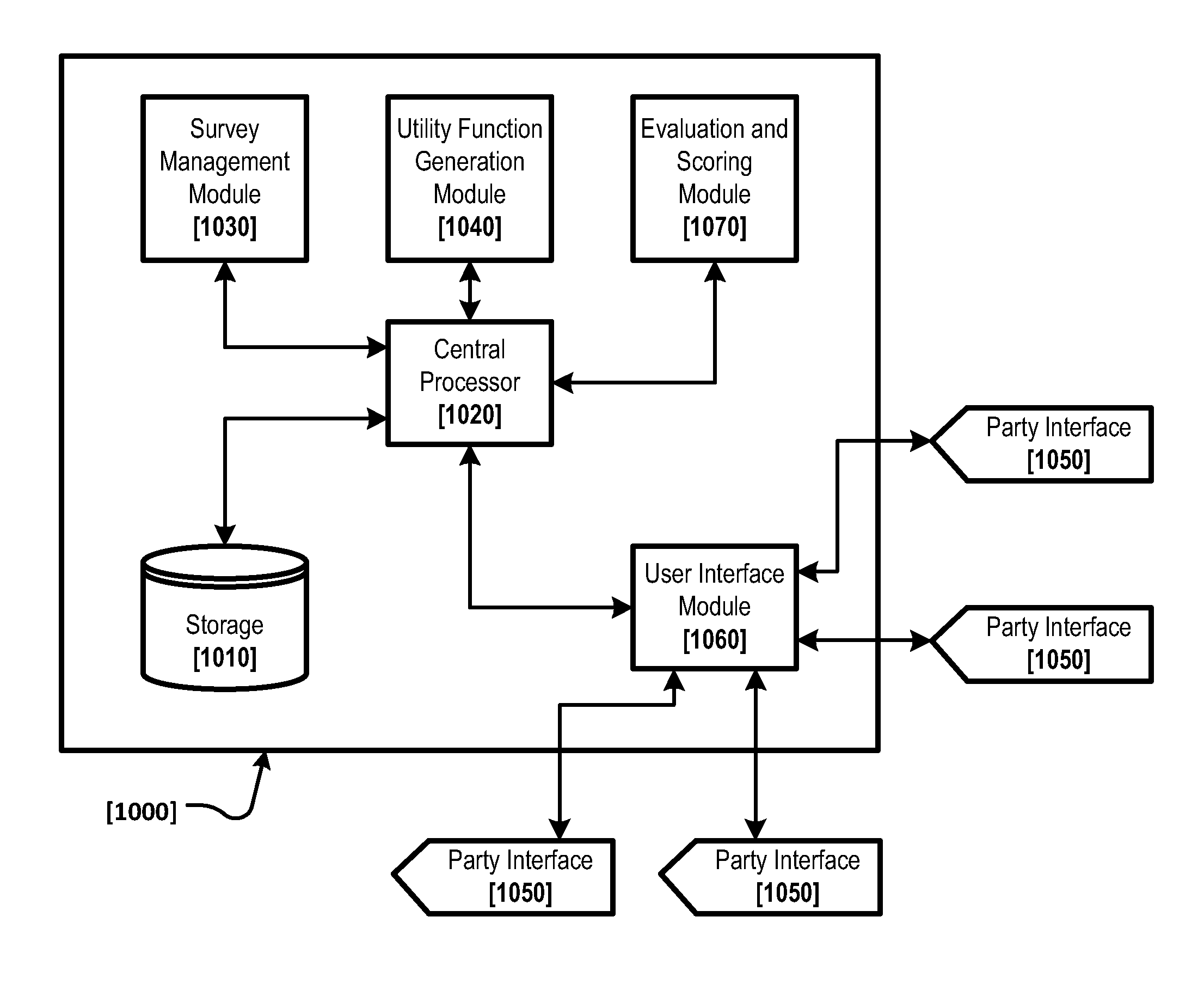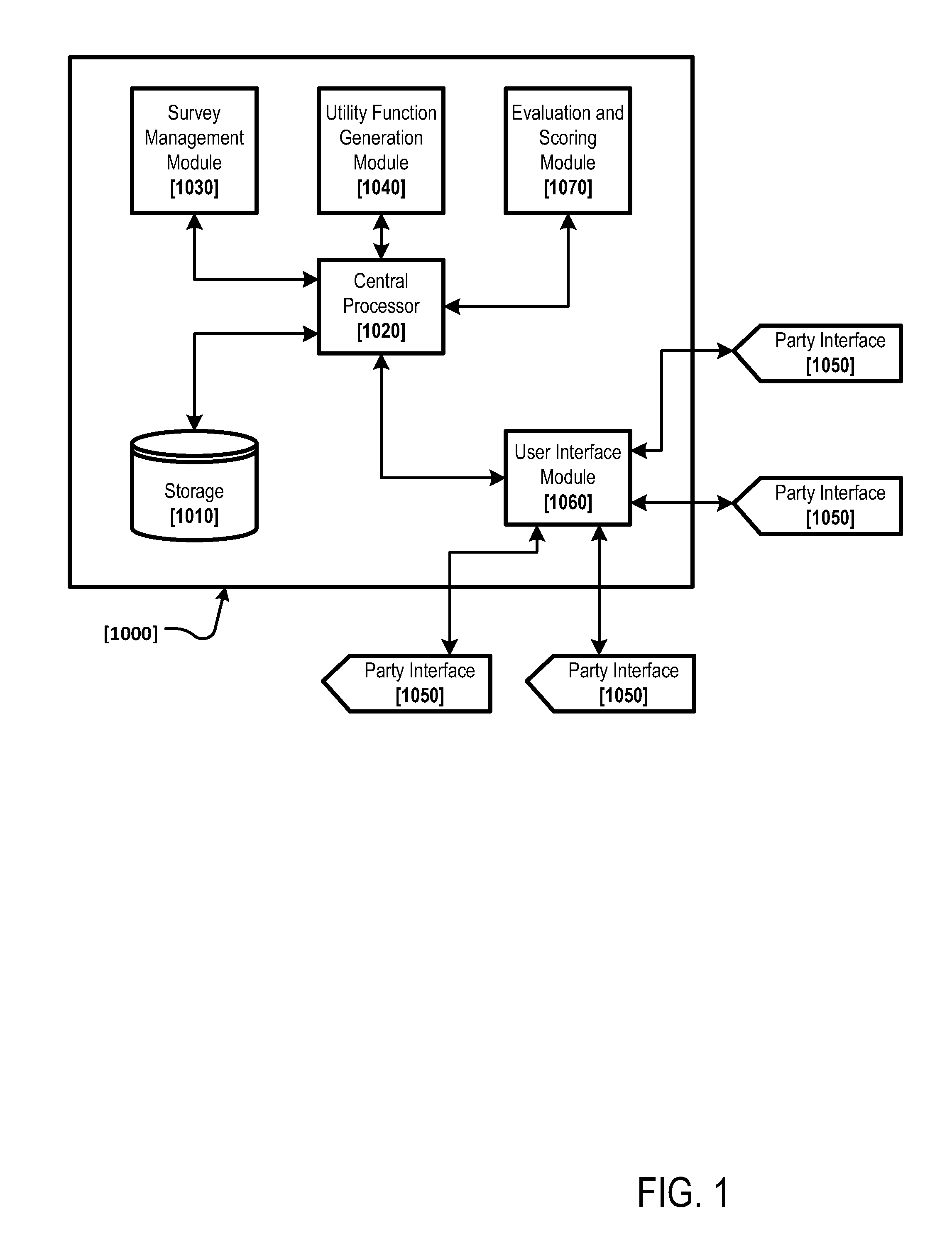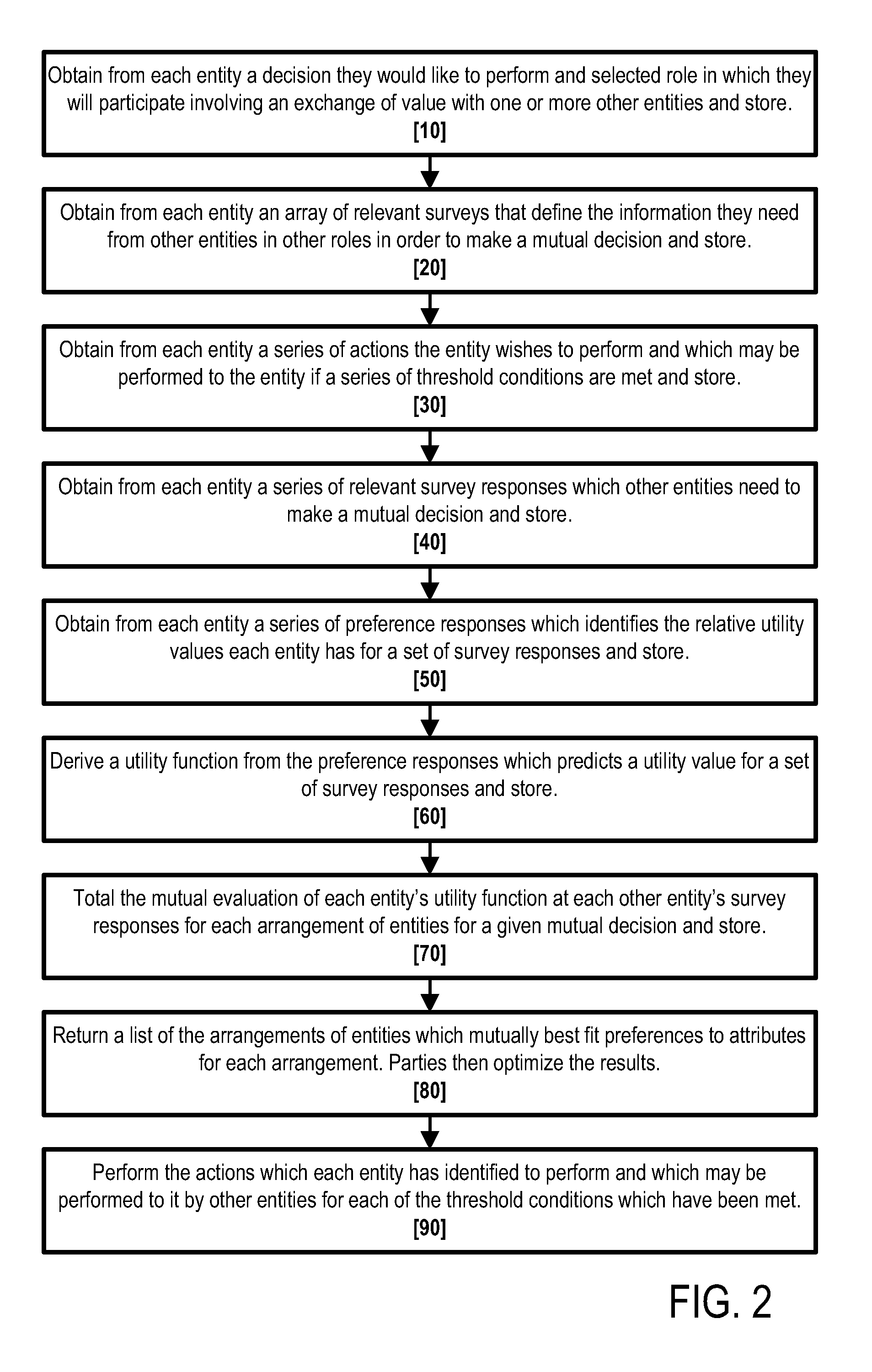Asymmetrical multilateral decision support system
a decision support system and multi-lateral technology, applied in the field of decision support systems, can solve the problems of inability to store records, inability to perform decisions involving more than one participant, and inability to provide information, etc., to reduce the number of computer cycles, reduce resource consumption, and reduce the temporal distance between critical system events.
- Summary
- Abstract
- Description
- Claims
- Application Information
AI Technical Summary
Benefits of technology
Problems solved by technology
Method used
Image
Examples
Embodiment Construction
[0051]In connection with the following disclosure, the following definitions and notational conventions will be used:
A. DEFINITIONS
[0052]User: Is a natural person who uses the system by interacting with one or more elements of the interface of the system.
[0053]Attribute: Is a characteristic of a tangible or intangible object consisting of its real or perceived qualities.
[0054]Attribute Level: Is a quantitative, qualitative, descriptive, binary or categorical value that is associated with an Attribute.
[0055]Entity: Is an object which can be engaged in a transaction of mutual value, comprising of an individual, or a collection of individuals, or an organization, or collection of organizations and one or more and tangible or intangible goods, services, or qualities which can be transacted.
[0056]Party: Is a classification which identifies an Entity member of a first class which evaluates a second class of Entities (Counterparties). A Party can be thought of as any Entity which is a subj...
PUM
 Login to View More
Login to View More Abstract
Description
Claims
Application Information
 Login to View More
Login to View More - R&D
- Intellectual Property
- Life Sciences
- Materials
- Tech Scout
- Unparalleled Data Quality
- Higher Quality Content
- 60% Fewer Hallucinations
Browse by: Latest US Patents, China's latest patents, Technical Efficacy Thesaurus, Application Domain, Technology Topic, Popular Technical Reports.
© 2025 PatSnap. All rights reserved.Legal|Privacy policy|Modern Slavery Act Transparency Statement|Sitemap|About US| Contact US: help@patsnap.com



